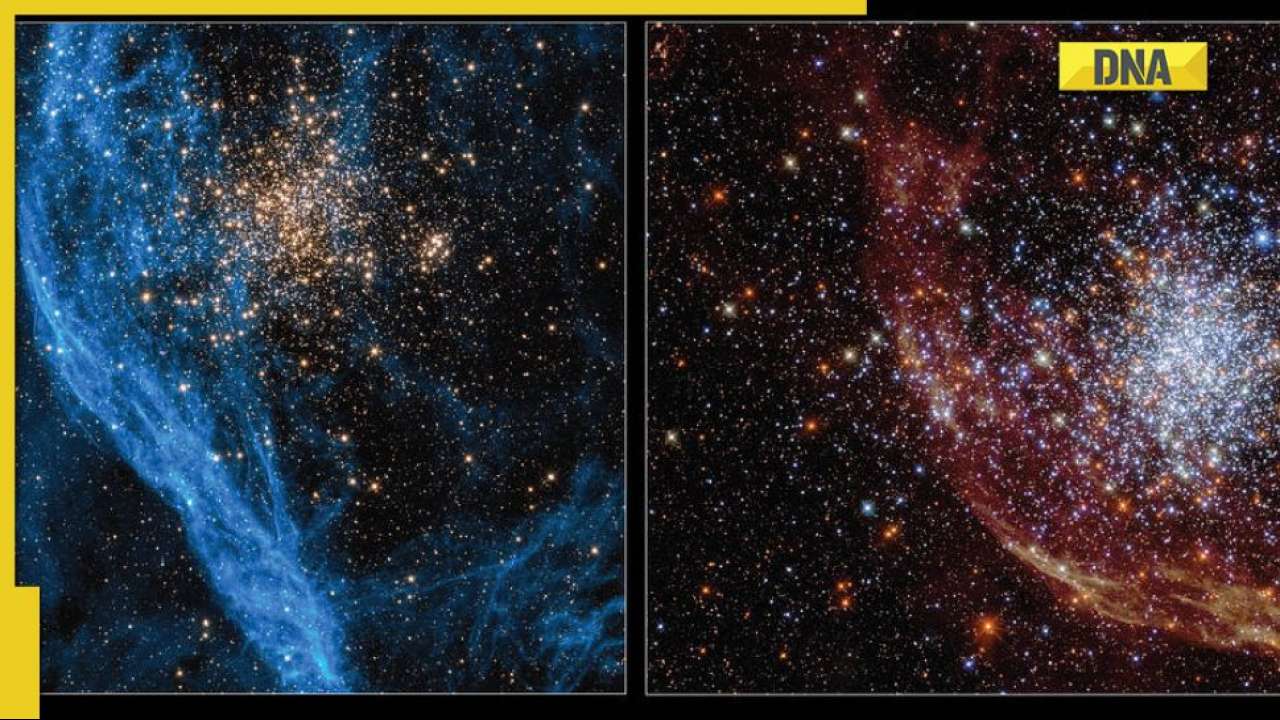
Even though the two photographs seem to be of completely distinct objects, they are both of NGC 1850. These two photos were captured by the same NASA's Hubble telescope, but different filters were employed to analyse the light at different wavelengths. Images with red nebulosity (also a different "pointing") encompass a far wider range, from the near-ultraviolet to the beginnings of the infrared spectrum, whereas images with blue nebulosity (what our eyes can perceive) contain some near-infrared light. This bright sky is a good example of why ultraviolet measurements are so useful for picking up the light of the hottest and youngest stars.
The Large Magellanic Cloud is a satellite galaxy of the Milky Way and the birthplace of billions of stars, including this globular cluster that is 100 million years old. The cluster is located in the constellation Dorado, some 160 thousand light-years distant. It is a spherical cluster of stars bound together by gravitational force, as are all globular clusters.
In contrast to most globular clusters, however, the stars in NGC 1850 are still in their early stages of evolution. There are no globular clusters containing young stars like NGC 1850 in our galaxy.
During their birth, the stars in NGC 1850 may have spewed dust and gas into the surrounding galaxy, according to astrophysicists. Since the freshly formed star cluster had such a high density, the ejected matter remained in the vicinity due to the cluster's gravitational attraction. Hydrogen and helium gas were drawn in by the cluster's strong gravity. This globular cluster expanded in both density and size as gas from these two sources merged to create a new generation of stars.
The existence of a black hole in NGC 1850 was confirmed in 2021. Many blue stars, which burn hotter and die younger than red stars, have also been seen (to the right in the second picture). About 200 red giants may also be seen here; these are stars whose cores have ran out of hydrogen and are now fusing hydrogen from farther out, causing their outer layers to expand, cool, and glow red (seen throughout the second image).
Also, READ: NASA: James Webb Space Telescope's iconic image of Southern Ring Nebula shows stellar surprise
You can get with this, or you can get with that.
Astronomers analyzed data from @NASAHubble through two different filters to piece together how a type of star cluster not found in our Milky Way formed at an unusually young age. More on the findings: https://t.co/kh7VKXxTts pic.twitter.com/LTsX8xtoRN— NASA (@NASA) December 9, 2022
A pattern of nebulosity, composed of diffuse dust and gas that is thought to be the byproduct of supernova explosions, can be seen around the cluster (the blue veil-like structures on the first image and the red ones on the second image).
The central region of NGC 1850 spans around 20 light-years in diameter and has a mass of about 63,000 times that of the Sun. To better understand the process of star formation, astronomers obtained images of this massive star cluster using observations from the Hubble Space Telescope over a broad spectrum of wavelengths.